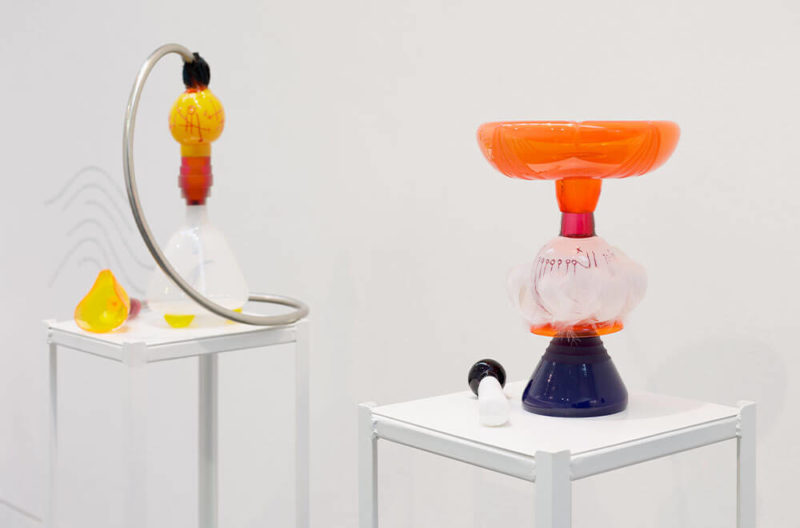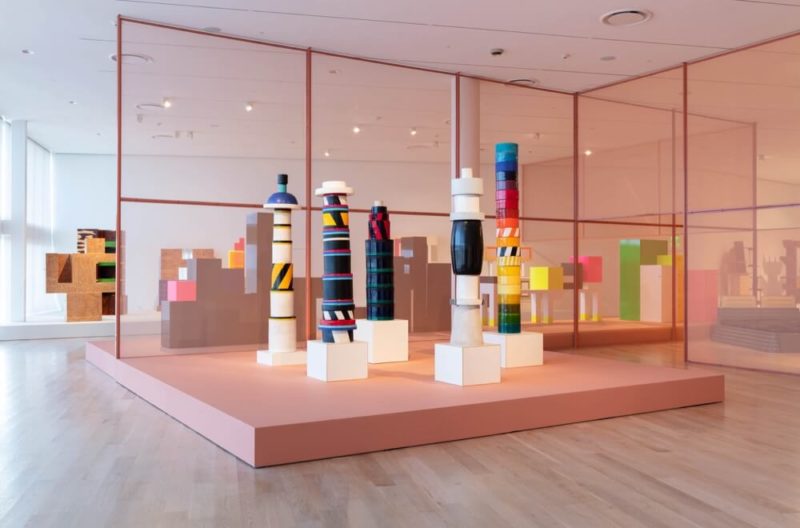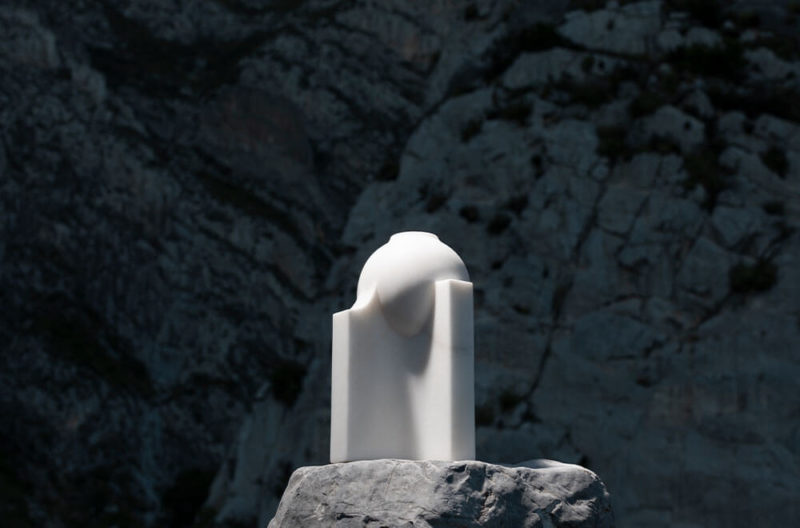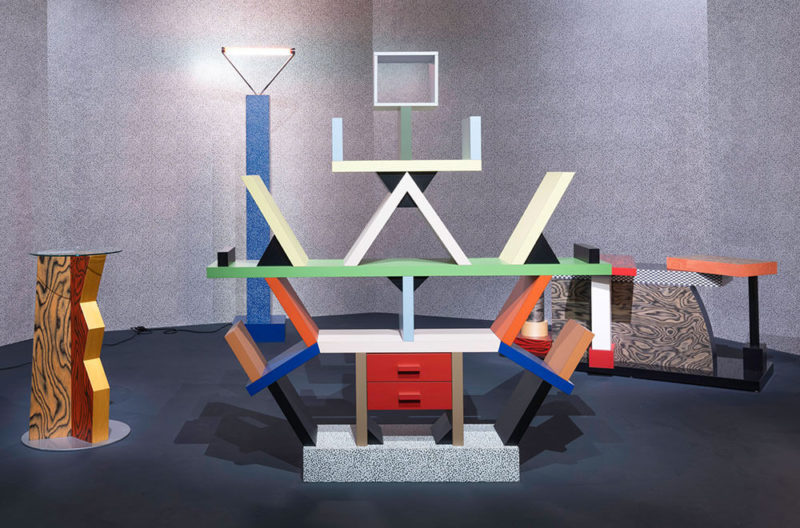Galerie Perrotin embraces design
The gallery tests new turf with a show that illustrates the impact of modern art on mid-20th century design.
Tout n’est qu’influence
Galerie Perrotin, 8 Avenue Matignon, Paris
Until 19th March, 2022
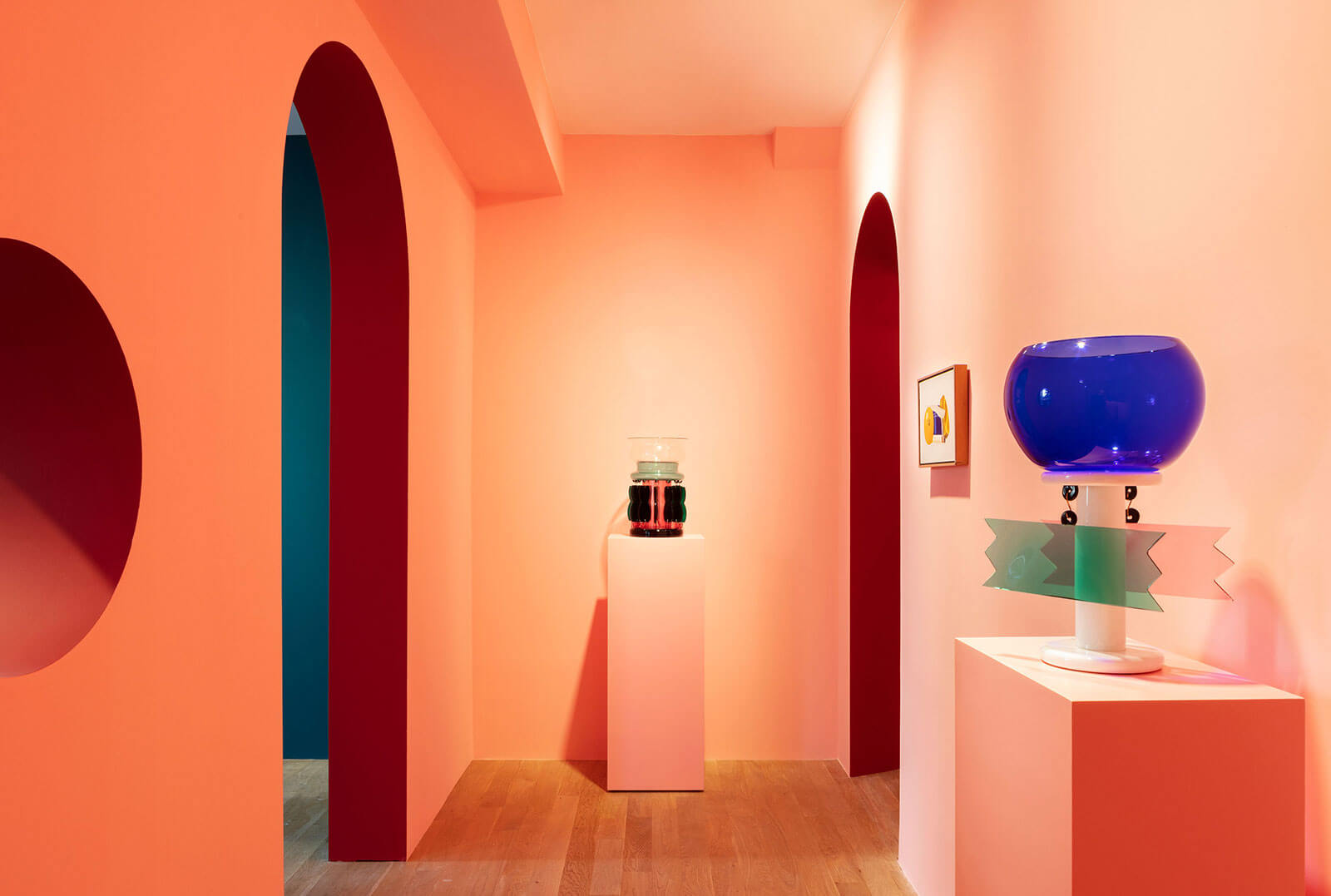
Exhibition view
COURTESY: © the artists & Perrotin / PHOTOGRAPH: Tanguy Beurdeley
EMMANUEL PERROTIN, THE Parisian dealer famed for his stable of cutting edge contemporary artists, is testing fresh turf with a show that illustrates the impact of modern art on mid-20th century design. ‘Tout n’est qu’influence’ (It’s all about influence) partners three giants of European design, Ettore Sottsass, François-Xavier Lalanne and Jean Royère with works by eleven iconic surrealist, post-expressionist and pop artists. The show, running until 19th March, occupies three floors of Perrotin’s recently opened Secondary Market gallery in a refurbished townhouse on the fashionable Avenue Matignon.
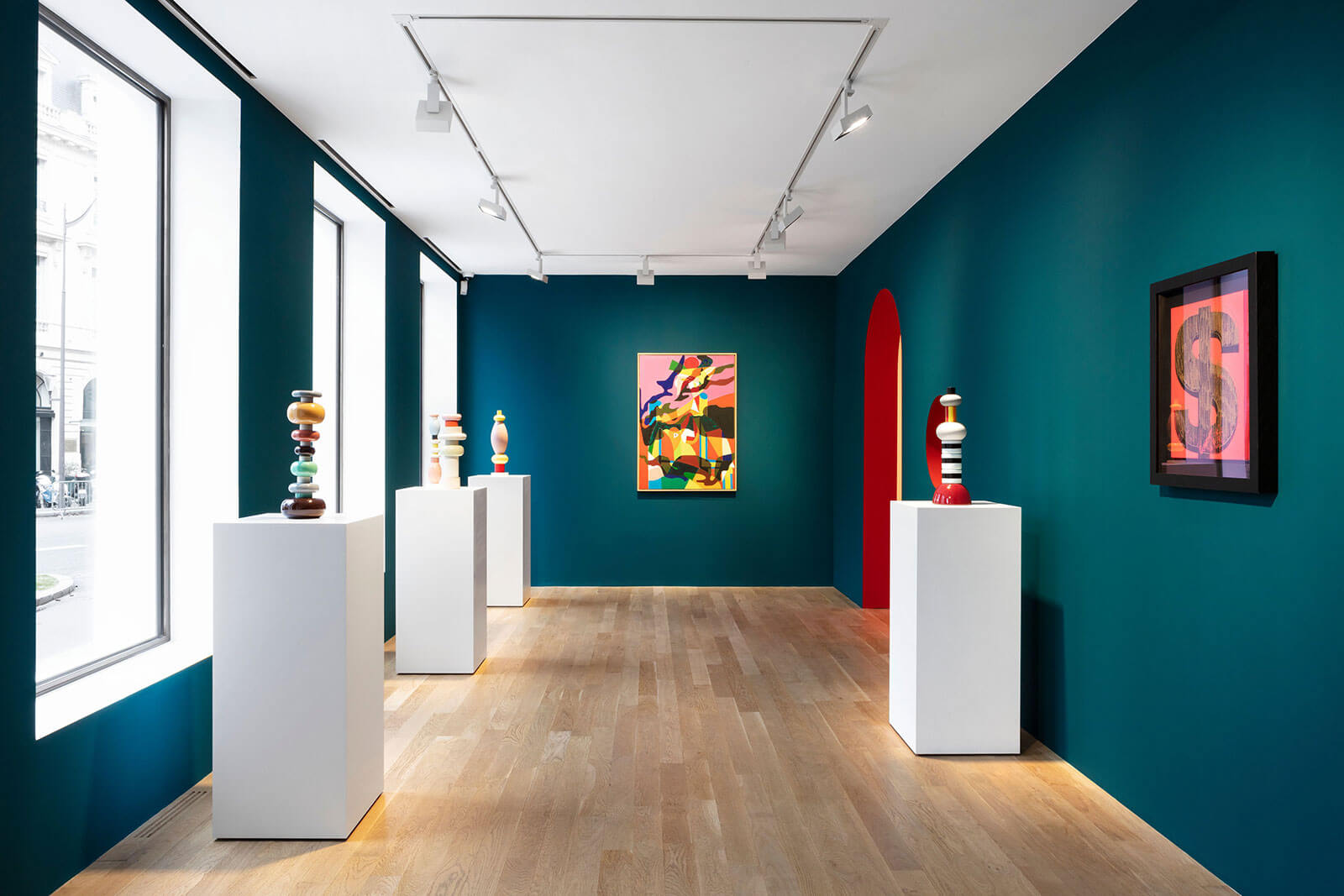
Exhibition view
COURTESY: © the artists & Perrotin / PHOTOGRAPH: Tanguy Beurdeley
At the entry-level, pastel-tinted, suggestively phallic Sottsass totems and vases are juxtaposed with pop art by Tom Wesselmann, Alain Jacquet, Jasper Johns and Andy Warhol. On the next floor Lalanne’s trademark sculptural sheep, geese and fish stand before surrealist works by René Magritte, Salvador Dali and two portraits of Diego Giacometti by his brother Alberto. Higher up again, an Alexander Calder mobile hangs over a straw marquetry Royère ‘Cosy corner’ couch and a short-legged dressing table, with a Henri Rousseau fantasy jungle scene and a Matisse portrait of Louis Aragon on the walls behind.
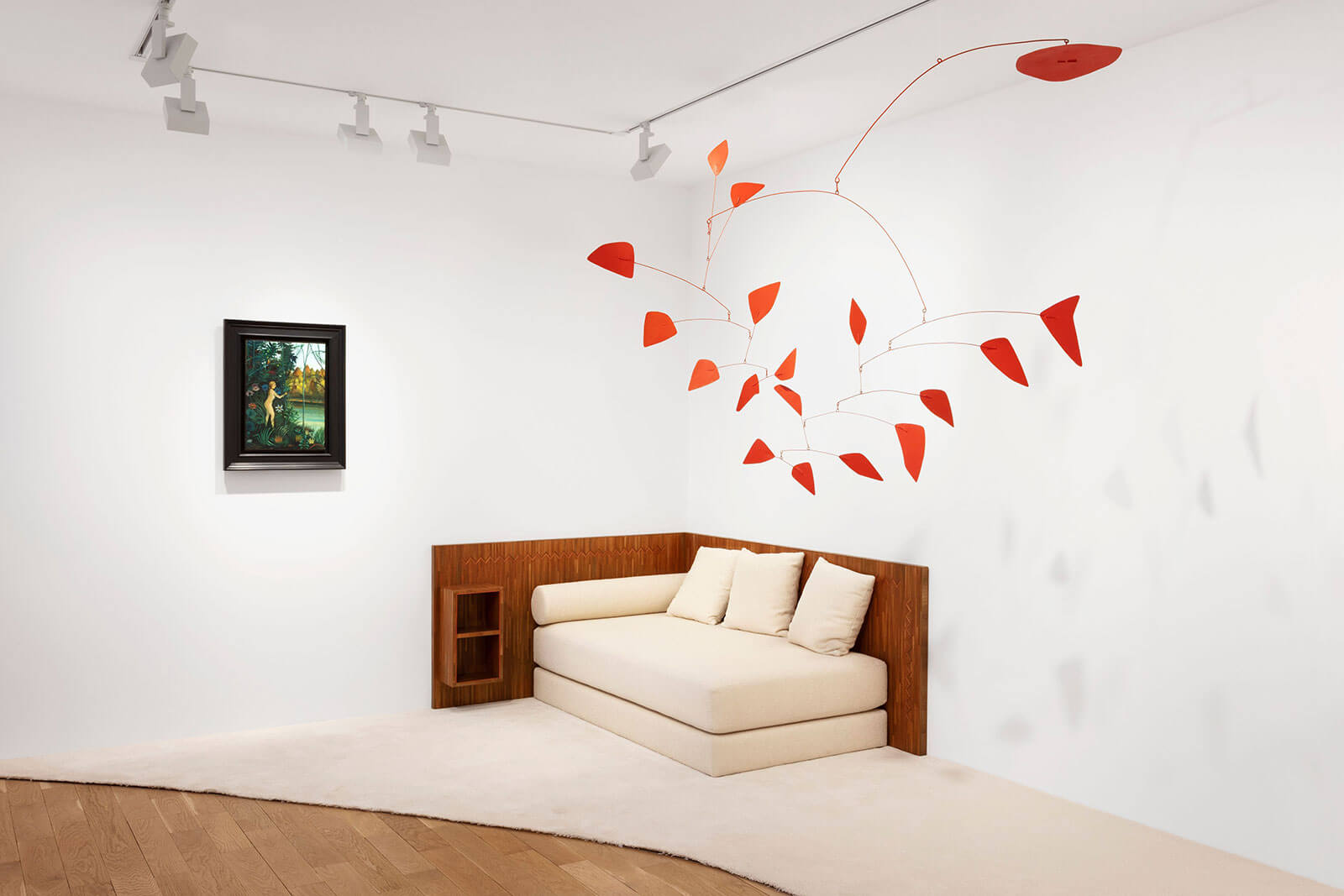
Left to right: painting by Henri Rousseau; Jean Royère, ‘Cosy corner’, 1951; Alexandre Calder, ‘Red Sumac’, 1972
COURTESY: © the artists & Perrotin / PHOTOGRAPH: Tanguy Beurdeley
“The whole purpose of the exhibition is to show who were the artists who influenced these three designers,” Tom-David Bastok, Perrotin’s partner in the secondary market venture told The Design Edit in an interview.
Perrotin’s foray into the design market is the latest evidence of the erosion of the compartmental walls between art and design. “We are not, per se, a design gallery,” said Victoria Thut, director of the secondary market operation, “But this was something we really wanted to offer to our audience. Tom, Dylan and Emmanuel really enjoy design in general, so this was bringing together something they all share,” she added, referring to former Kamel Mennour Director Dylan Lessel, a third partner in the venture.
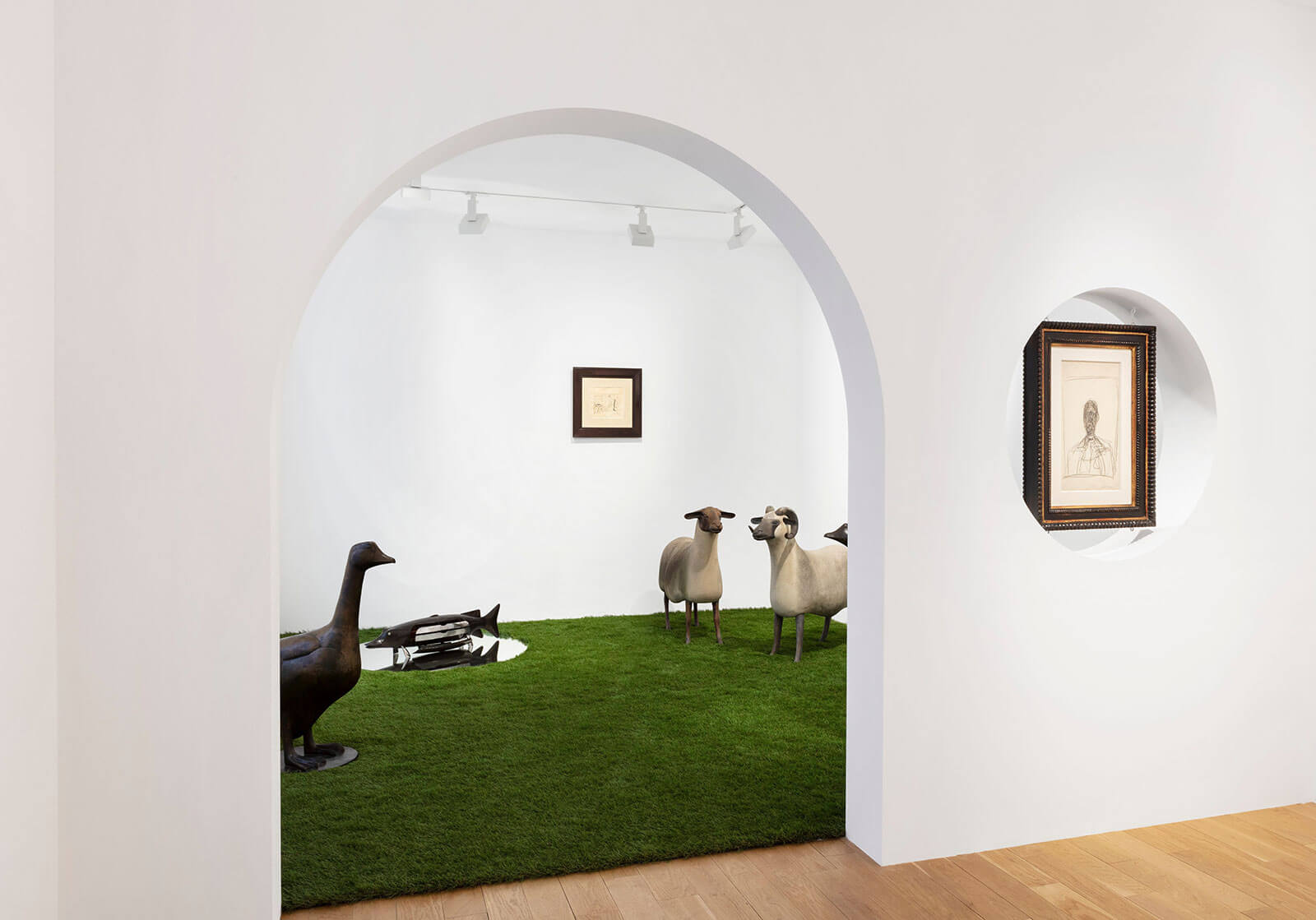
From left to right: François-Xavier Lalanne, ‘Les oies’, 1991 and ‘Brochet’, 1973; Salvador Dali, ‘Atelier de l’artiste (étude pour ‘Destino’ de Walt Disney)’, 1947 ; François-Xavier Lalanne, ‘Mouton transhumant’, 1988 and ‘Bélier’ from the ‘Nouveaux Moutons’ series, 1994; Alberto Giacometti, ‘Tête de Diego & Femme lisant’, 1951
COURTESY: © the artists & Perrotin / PHOTOGRAPH: Tanguy Beurdeley
“We wanted to do something new,” Thut added. “It brings another type of audience, a younger and different type of generation that sometimes is intimidated by the secondary art market in general. It invites them to come into our gallery and discover a new aspect of art and how it can have a relationship with pieces they are already familiar with.”
In the wider context of design history, it’s an established proposition that pop artists influenced Sottsass from the early 1960s onwards, notably in his 1980s Memphis period. Sottsass himself wrote admiringly of them: “Banality was their universe … their signature was the language of the street.” Still, even if the linkage isn’t new it’s visually striking to see the purified forms and flat colours of his totems mirroring the graphics and palette of Wesselmann, for example.
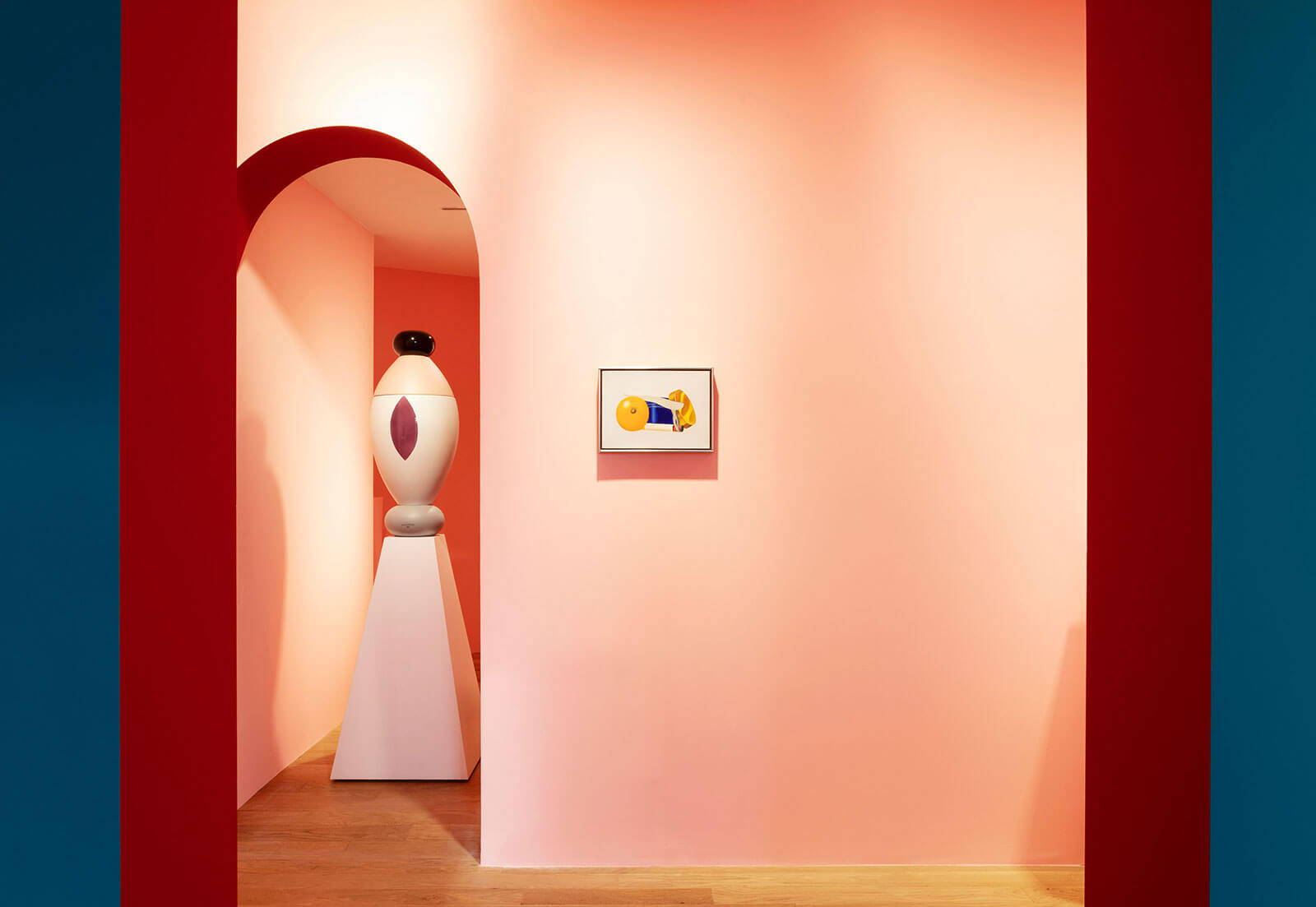
From left to right: Ettorre Sottsass, ‘5A’ totem, conceived in 1964, edited by Bitossi in 1994; Tom Wesselmann, ‘Study for Still Life with Blue Jar and Smoking Cigarette’, 1980
COURTESY: © the artists & Perrotin / PHOTOGRAPH: Tanguy Beurdeley
Equally, Lalanne and his wife Claude were core members of the Parisian surrealist movement so the pairing with their friends Dali and Magritte makes clear sense. Less straightforward is the relationship with the Giacomettis. Lalanne hated their “tragic universe”, says Bastok, who explains their presence in the show by arguing that influence, like magnetism, can act through repulsion as well as attraction.
The case of Royère is less evident again. The gallery quotes art historian Françoise-Claire Prodhon to say Royère was intrigued by the shadows of Calder’s mobiles and sought similar shadow effects in designing his furniture. Equally, says Bastok, “the fine lines that Matisse used whenever he was drawing or painting was something that Royère explicitly found as an inspiration.”
In matching artworks to the design pieces, “we really went out of our way to create an identity for the designers,” he said.
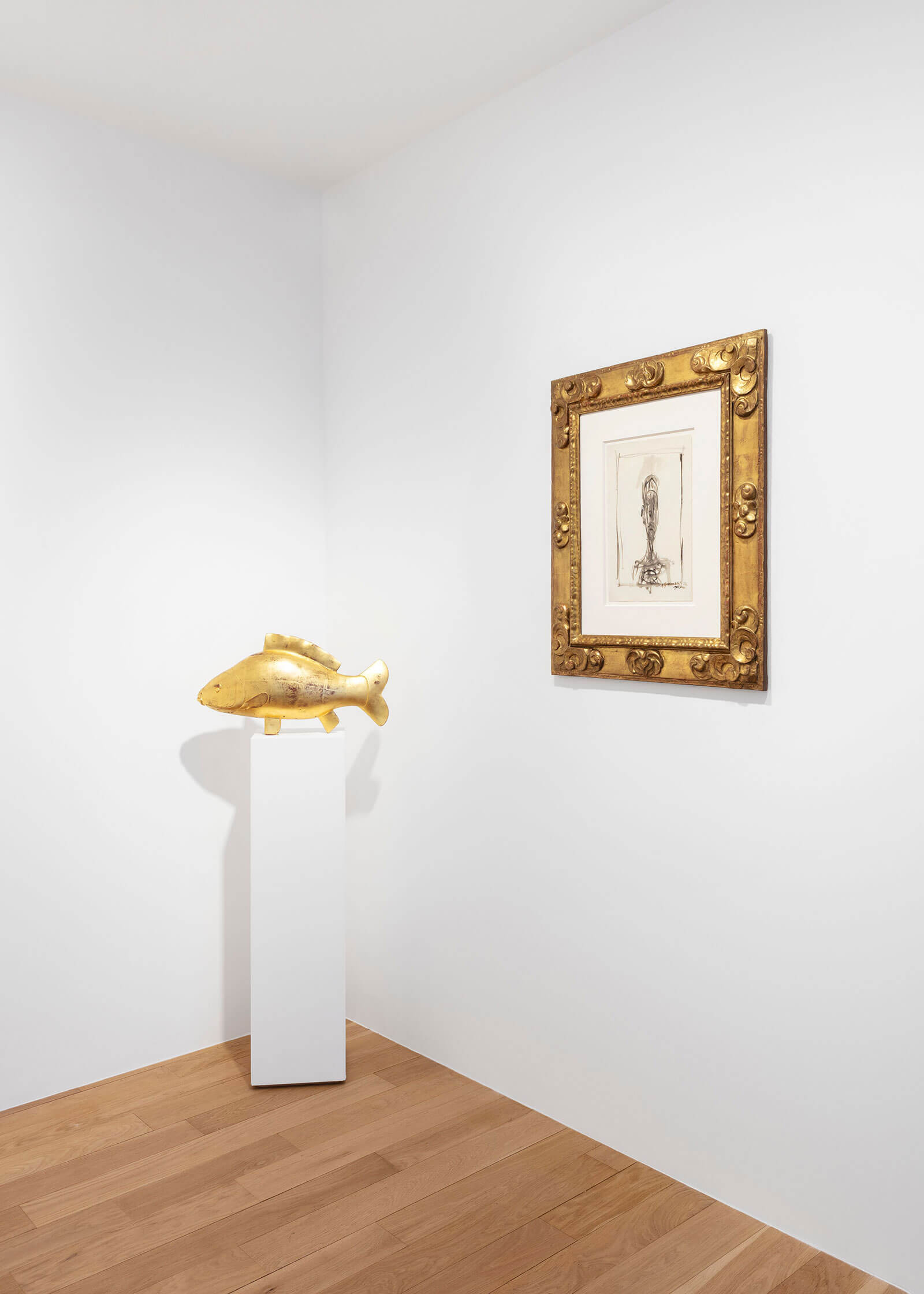
François-Xavier Lalanne, ‘Carpe d’or’, 1987; Alberto Giacometti, ‘Buste d’homme (Portrait de Diego)’, 1947
COURTESY: © the artists & Perrotin / PHOTOGRAPH: Tanguy Beurdeley
Whether that ambition is realised is a matter of judgement. One of Royère’s sinuous ‘Liane’ lamps for example might make a better case for a debt to Calder, Matisse or Rousseau than the pieces in the show. And, notably in the case of Sottsass, whose identity here is summed up in a set of totems and vases, it is hard to do justice to a prodigiously productive and revolutionary career spanning half a century with such a narrow selection, however emblematic they may be of a particular period.
Setting that aside, this is a show that brings a dynamic new player into the design market. Despite a Covid-restrained soft launch, some 600 people attended the opening and visitor numbers have since run at around 60 to 80 a day, Bastok says. On that metric, the experiment looks a success.




